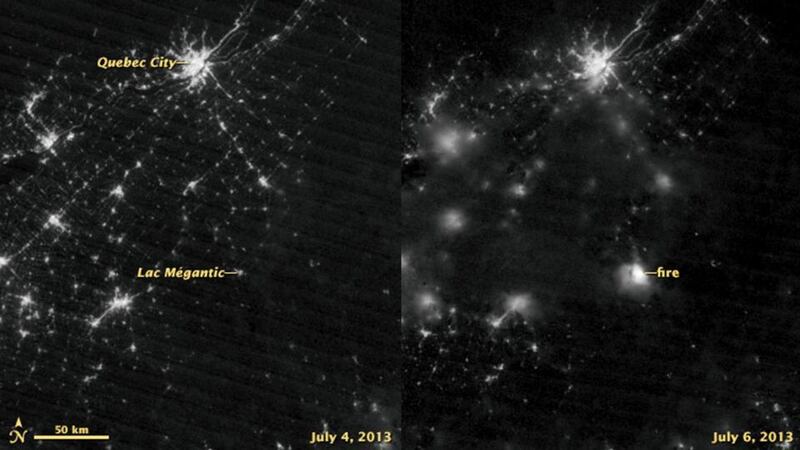A criminal investigation has been opened into the runaway oil train crash in a small Quebec town as the death toll climbed to 15, with dozens more bodies feared buried in the burned-out ruins.
Quebec police Inspector Michel Forget said that investigators have “discovered elements” that have led to a criminal probe in Lac-Megantic.
He gave no details but ruled out terrorism and said police are more likely to explore the possibility of criminal negligence. Provincial police spokesman Sergeant Benoit Richard said no arrests have been made.


The death toll rose with the discovery of two more bodies yesterday. About three dozen more people were missing. The bodies that have been recovered were burned so badly they have yet to be identified.
Investigators are focusing on whether a fire on the train a few hours before the disaster set off a deadly chain of events that has raised questions about the safety of transporting oil in North America by rail instead of pipeline.
The unmanned Montreal, Maine & Atlantic Railway train broke loose early on Saturday and sped downhill in the darkness nearly seven miles before jumping the tracks at 63 mph near the Maine border. All but one of the 73 cars were carrying oil. At least five exploded.
Rail dispatchers had no chance to warn anyone during the train’s 18-minute journey because they did not know it was happening themselves, Transportation Safety Board officials said. Such warning systems are not in place on secondary rail lines, said TSB manager Ed Belkaloul.
The derailment and explosions destroyed about 30 buildings, including the Musi-Cafe, a popular bar that was filled at the time, and forced about a third of the town’s 6,000 residents from their homes.
The same train caught fire hours earlier in a nearby town, and the engine was shut down — standard operating procedure dictated by the train’s owners, Nantes Fire Chief Patrick Lambert said.
Edward Burkhardt, president of the railway’s US-based parent company, Rail World, suggested that shutting off the locomotive to put out the fire might have disabled the brakes.
“An hour or so after the locomotive was shut down, the train rolled away,” he told the Canadian Broadcasting Corporation.
Transportation Safety Board investigator Donald Ross said the locomotive’s black box has been recovered but warned that the investigation was still in its early stages.
The derailment raised questions about the safety of Canada’s growing practice of transporting oil by train, and is sure to support the case for a proposed oil pipeline running from Canada across the US — a project that Canadian officials badly want.
Efforts continued yesterday to stop waves of crude oil spilled in the disaster from reaching the St. Lawrence River, the backbone of the province’s water supply. Environment Minister Yves-Francois Blanchet said the chances were “very slim”.
AP











